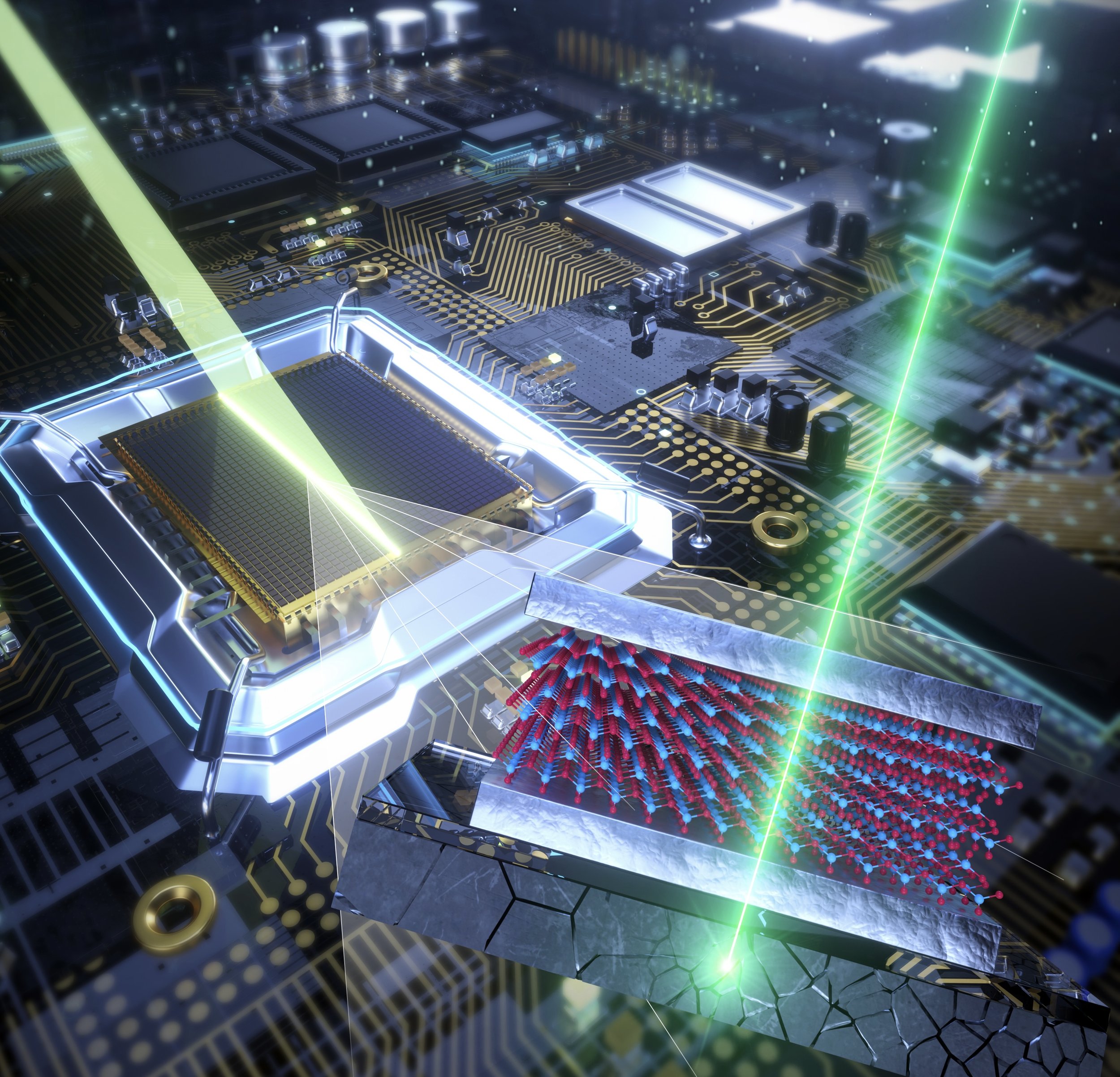Goals
Our overarching goal is to propose and realize advanced integration platforms that effectively harness diverse semiconductor technologies, thereby contributing to the resolution of pressing global energy challenges. Through the seamless integration of novel materials, device architectures, and circuits we aim to foster enduring energy solutions and drive sustainable technological progress.
Research Topics
1
Ferroelectric Materials and Devices
We explore CMOS-compatible ferroelectric materials and devices to enhance conventional memory technologies such as NAND flash and DRAM. This research further drives in-memory computing and neuromorphic architectures, paving the way for next-generation, high-performance computational paradigms.
-
Memory and Logic
We investigate hafnia-based ferroelectric memory solutions—including FeNAND, FeRAM, etc to surpass the performance limits of conventional charge-trap flash and DRAM. For logic, by adopting and negative-capacitance FeFETs—enabling aggressive EOT scaling and low-voltage operation.
-
Energy Storage and Harvesting
Beyond advancing semiconductor devices, we leverage the unique properties of ferroelectric materials to tackle the inherent trade-off between charging rate and capacity in conventional energy storage/harvesting systems. We explore innovative material integrations and device architectures for both portable electronics and large-scale applications.
2
Neuromorphic & Stochastic Computing
We investigate neuromorphic and stochastic computing as alternatives to traditional architectures, aiming for energy-efficient, brain-inspired information processing. Neuromorphic systems mimic neural networks with event-driven hardware, while stochastic computing uses probabilistic data representation for low-power, fault-tolerant operation. Our work focuses on integrating these concepts into advanced semiconductor devices and architectures for next-generation computing.
-
Neuromorphic Hardware Design
Our research in neuromorphic computing focuses on developing brain-inspired hardware architectures that emulate the behavior of biological neural systems. These systems use event-driven, parallel, and analog or mixed-signal circuits to enable real-time and energy-efficient information processing. We design spiking neural networks (SNNs) and implement learning mechanisms such as spike-timing-dependent plasticity (STDP) directly in hardware. Furthermore, we explore the use of emerging devices such as memristors and ferroelectric transistors to mimic synaptic functions. These efforts aim to build scalable neuromorphic platforms suitable for applications in edge AI, robotics, and adaptive systems.
-
Stochastic Computing and Probabilistic Systems
In the area of stochastic computing, we study unconventional methods that represent and process data as probability streams or random bitstreams. This allows for highly simplified arithmetic operations that are inherently tolerant to errors and hardware variability. We develop stochastic logic circuits that perform low-power computation, particularly for tasks such as image processing, neural network inference, and sensor data fusion. This research is especially relevant in the context of nanoscale semiconductor technologies, where traditional binary precision becomes increasingly costly and sensitive to noise. Stochastic computing offers a promising alternative by embracing randomness as a resource.
-
Device-Circuit Co-Design for Emerging Technologies
To support neuromorphic and stochastic architectures, we adopt a device-to-system approach, co-designing circuits with novel semiconductor devices. Our work investigates non-volatile memory technologies such as resistive RAM (ReRAM), phase-change memory (PCM), and ferroelectric FETs, which are capable of emulating neural and probabilistic behavior at the hardware level. We study the electrical characteristics, switching dynamics, and variability of these devices to inform the design of reliable and efficient computing circuits. By integrating material science, device physics, and circuit engineering, we aim to create platforms that are both scalable and adaptable for future computing needs.
3
Sensor Technologies
We develop chemical and physical sensor platforms that seamlessly integrate with existing Si CMOS processes. By enabling efficient artificial sensing systems for the IoT era, we aim to establish robust and scalable sensor solutions that advance intelligent signal processing and real-time environmental interfacing.
-
Chemical and Physical Sensors
We exploit oxide and two-dimensional semiconductors to develop CMOS-compatible sensor platforms that detect chemical and physical stimuli via redox interactions and other solid-state phenomena. These sensors aim for high sensitivity and selectivity, supporting a broad spectrum of IoT-driven applications.
-
Integrated Sensor Platforms
In addition to individual sensor devices, we investigate system-level integrated sensor arrays with driving circuits and data-processing modules, ultimately advancing real-time environmental monitoring and adaptive sensor networks.
We employ low-frequency noise (LFN) measurements to investigate reliability—an essential criterion for commercializing novel semiconductor materials and devices. By examining LFN characteristics, we elucidate fundamental operational mechanisms and degradation behaviors, thereby enhancing material and device understanding to facilitate their successful transition into future applications.
4
Low-frequency Noise Analysis
-
Si CMOS Devices
We investigate low-frequency noise (LFN) characterization of Si-based devices—ranging from conventional bulk transistors to, SOI transistors, and ferroelectric transistors. By elucidating the underlying noise mechanisms, these findings guide targeted design optimizations for stable, high-performance semiconductor solutions.
-
Oxide, Organic, and Two-Dimensional Semiconductors
We extend our LFN analysis to emerging materials, including oxide, organic and two-dimensional semiconductors. Based on LFN analysis, we not only elucidate the distinctive properties of these next-generation materials and devices, but also highlight the reliability challenges that must be overcome for successful commercializationss.
-
Stochastic Computing
Moving beyond reliability analysis, we leverage LFN as a novel resource for stochastic computing—a cutting-edge paradigm that harnesses controlled randomness in device operations. By systematically refining noise characteristics at the device level, we enable innovative architectures for energy-efficient computation and advanced artificial intelligence.














